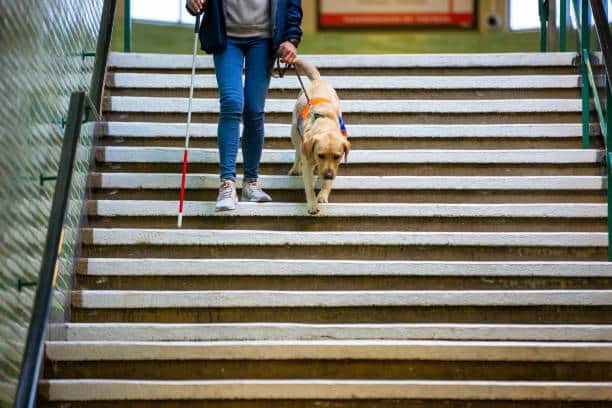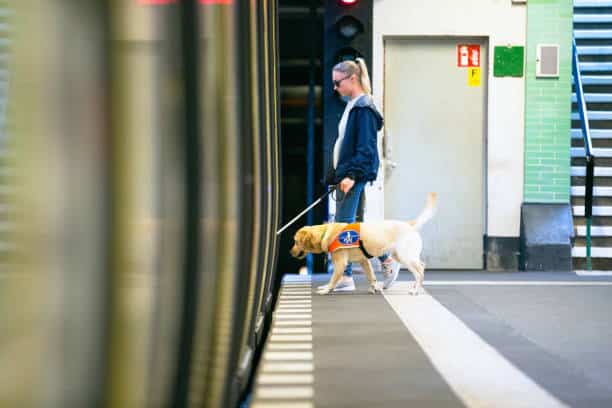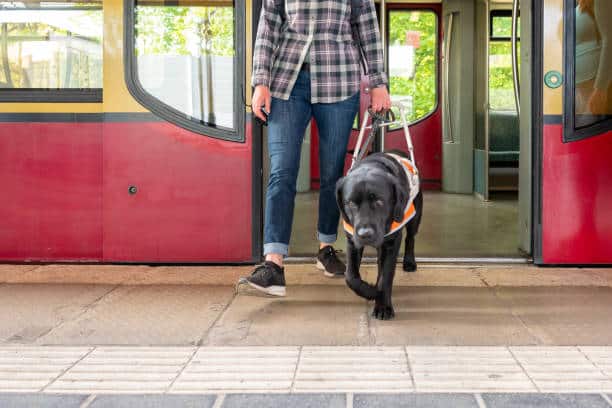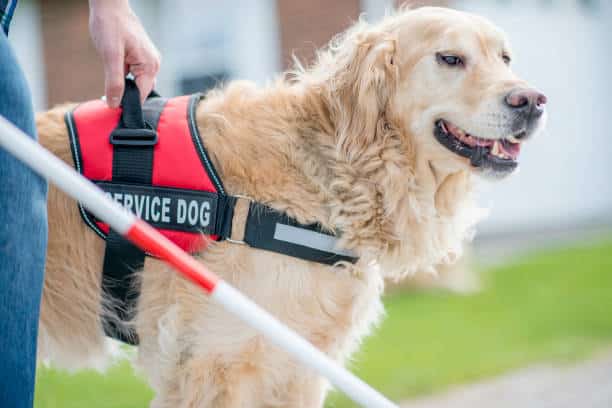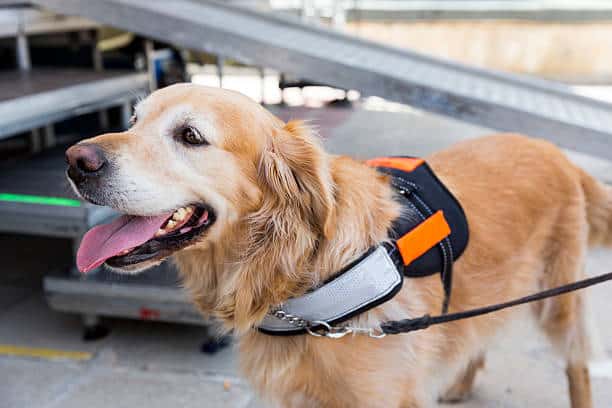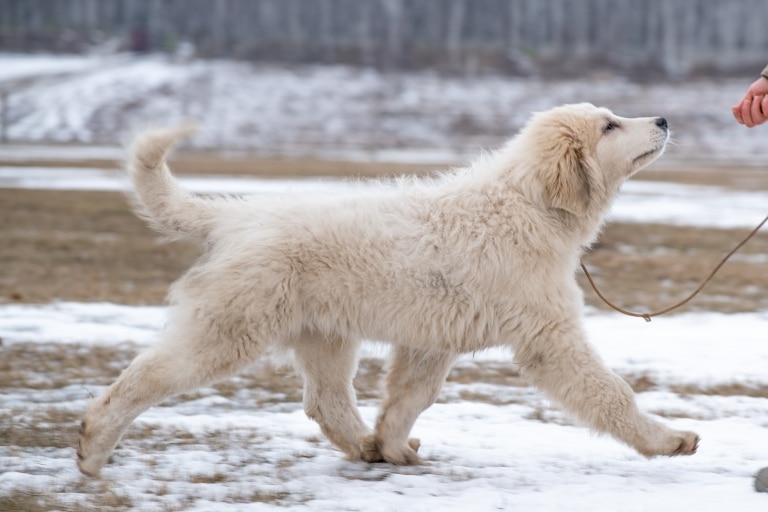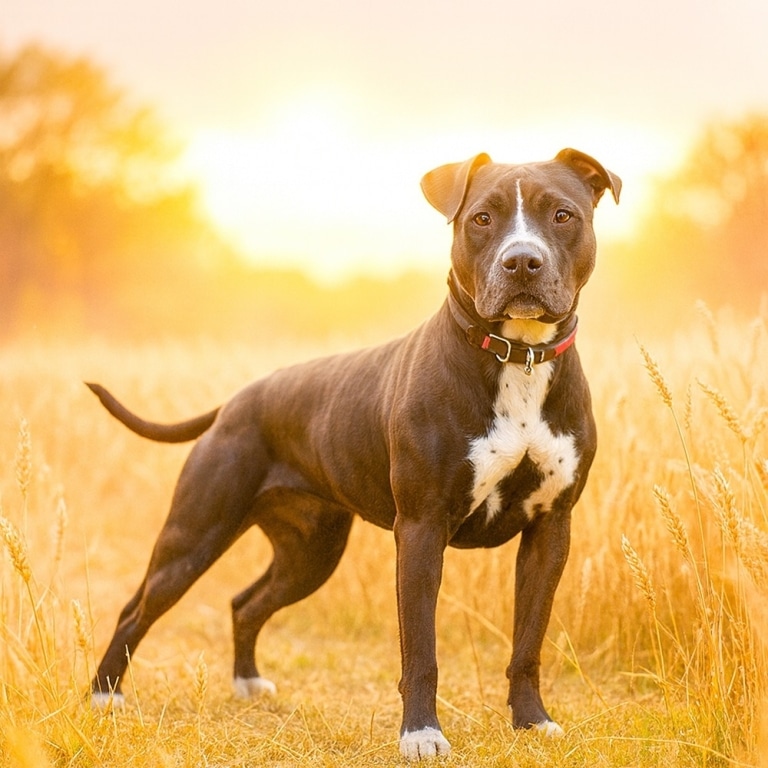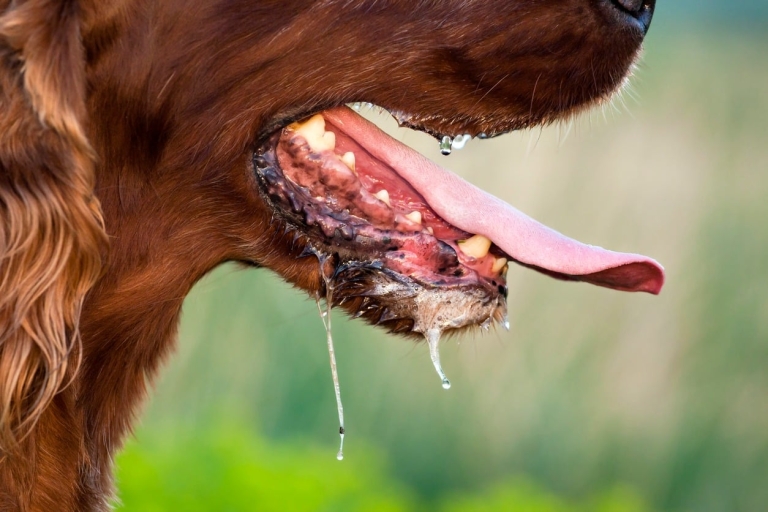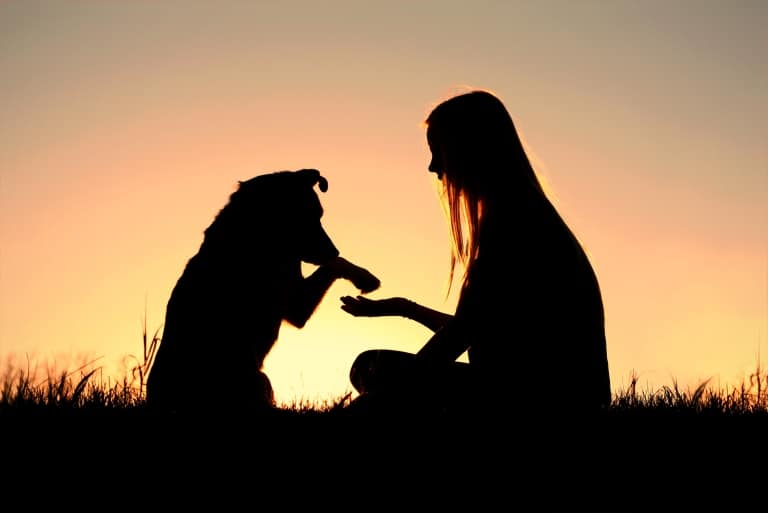Guide dogs are dogs specially trained to help visually impaired people live their lives to the fullest. They become not just assistants, but real friends and family members who will always support and protect from dangers. Although the idea of using guide dogs has existed for thousands of years (the first mentions are found in ancient Rome), for Ukraine it became especially urgent with the beginning of a full-scale war with Russia in 2022. Our defenders defend the homeland from the invaders every day and, unfortunately, the price is prohibitively high. Many of them are injured and lose the opportunity to see the world with their own eyes for the rest of their lives. That is why it is so important to start schools for training guide dogs in Ukraine, to implement the relevant legislation and to help our soldiers to return to their usual independent life as much as possible. Surprisingly, the first such school was founded in Germany just during the First World War (in 1916) for its soldiers, and in 1929, the first organization for training guide dogs appeared in the USA – “Seeing Eye”. So let’s learn a little more about these wonderful assistants.
What breeds of dogs are used to guide blind people?
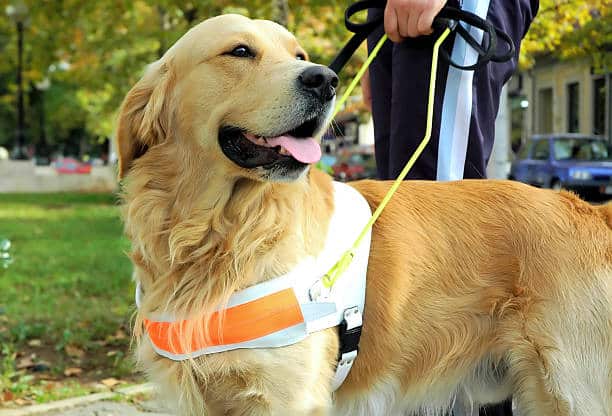
Breeds of dogs are most often used as handlers, which are distinguished by intelligence, loyalty and the ability to ensure the safety of their owner. Each of the breeds below has its own characteristics, and the choice often depends on the personal needs and living conditions of a particular person. The main thing is the synergy between the dog and the owner, because it is cooperation for many years 24 hours a day.
- Labrador retrievers are one of the most popular dog breeds. They are intelligent, obedient, easy to train and have a calm nature. These dogs adapt well to different living conditions and have a natural tendency to cooperate with people.
- Golden retrievers are similar to Labradors in their behavior and intelligence. They are friendly, affectionate, loyal and easy to train.
- German shepherds, thanks to their intelligence, discipline and ability to make quick decisions, are also quite often used as guides. They are loyal and attentive, which makes them reliable partners for people with visual impairments.
- Poodles are perfect for people who suffer from allergies because they have hypoallergenic fur. They are very intelligent and easy to train.
- The Labradoodle is a breed that combines the best features of the Labrador Retriever (intelligence) and the Poodle (hypoallergenic coat), and can become an excellent handler if properly trained.
- Although Border Collies are so often used as handlers, they are known for their high intelligence and ability to learn. Their energy and dedication make them excellent candidates for this role.
What qualities should guide dogs have?
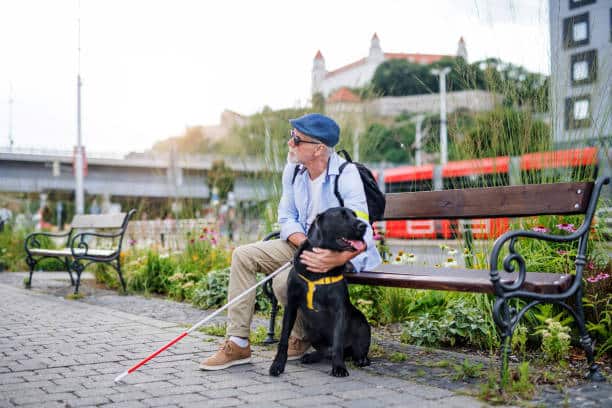
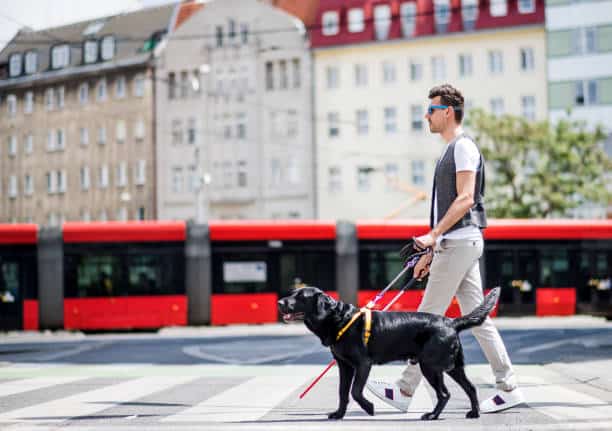
These dogs play an extremely important role for their owner, because they protect him from danger, are always nearby and support him in any situation. Therefore, they must have a certain set of qualities to effectively perform their duties:
- Mind. Guide dogs must have the ability to think independently in critical situations and make the right decisions, quickly and accurately learn commands and instructions.
- Obedience. They must obey their owner’s commands unquestioningly to avoid danger.
- Intellectual disobedience. At the same time, guide dogs must be able to refuse the owner’s command if it could lead to danger.
- Calmness and stress resistance. They must remain calm even in difficult or stressful situations such as crowds of people, loud noises or unfamiliar surroundings.
- Concentration. While working, dogs must remain focused on their duties and not be distracted by extraneous stimuli such as other animals, smells or people.
- Socialization and benevolence. They should be well socialized, friendly, to feel comfortable around people, and not show aggression.
- Endurance and physical health. Guide dogs often walk long distances, sometimes several times a day, so good physical condition and endurance are necessary to accompany their owner without tiring.
- Devotion. They must be deeply devoted to their owners, because they are their constant companions.
- Adaptability. Guide dogs must be able to adapt to different living conditions and environments, be it city streets, public transport or trips to other cities. Adaptability allows them to effectively perform their duties in any conditions.
How is the training of guide dogs?
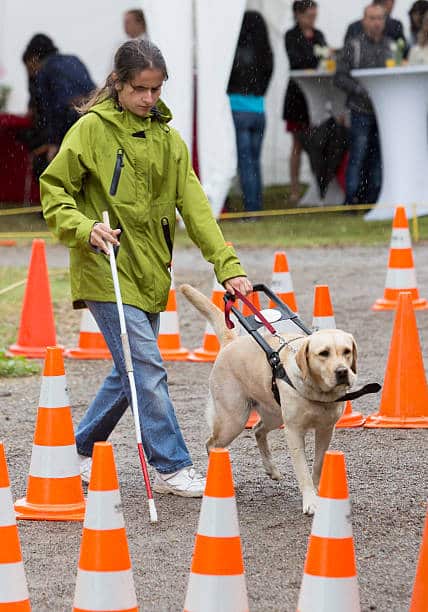
Training guide dogs is a long process that requires careful preparation. The main goal of training is to prepare a dog to perform complex tasks that will ensure the safe and independent movement of a person with visual impairments, so the above-mentioned breeds that have the appropriate qualities are usually chosen for the role of handlers. Usually, the selection of puppies begins at an early age and special attention is paid to a healthy psyche, balance, curiosity and sociability. Then they live in special families, where they are accustomed to life among people and social situations, laying the foundation for further education. They learn to respond calmly to various sounds, smells, traffic, other animals and people. At around 6-12 months of age, dogs begin to learn basic commands such as “sit”, “lay”, “to me”, “beside” etc. and get used to following them without hesitation or stress. They also learn to walk on a leash without pulling and stay close to their trainer or owner.
The main stage of training lasts from 4 to 6 months and includes the study of special skills that are necessary for safe movement. Dogs learn to navigate in space (city streets, public transport, shopping centers, etc.), avoid obstacles, find doors, stairs, pedestrian crossings, determine a safe moment to cross the road, stop in front of obstacles and warn the owner about danger. During training, dogs are often taken out for walks around the city so they can get used to noise, traffic, lots of people, as this helps them learn to navigate and stay focused on their work.
After completing the basic training, the dog is introduced to the future owner. Together, they undergo a joint training course, during which they learn the basics of working with a guide dog, the peculiarities of care and interaction. This helps the owner understand how to properly manage the dog and how to react in different situations. Usually, the organization that conducted the training is in touch and ready to consult on any issue, help with regular checks of the dog’s condition and conduct additional training if necessary.
On average, guide dogs work for 8-10 years. After that, the dogs stay with their owners as pets or are transferred to other families where they can spend the rest of their lives in peace. Thus, a person needs to be prepared for the fact that during his life he will have to undergo training with a new dog several times in order to live as fully as possible.
The popularity of guide dogs in Ukraine
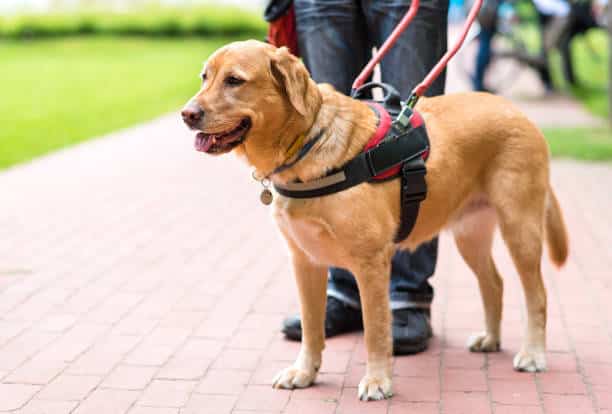
Guide dogs in Ukraine are becoming more and more popular, especially in the context of increasing awareness of the rights of people with disabilities and the need to ensure their independence. However, this process still faces some challenges. For example, unlike many European countries, there are only a few organizations in Ukraine that train guide dogs, and the training process is expensive and lengthy. We lack qualified trainers and state support. Often funds for education are raised through charitable foundations or with the help of private donations.
It should be noted that in most countries of the world guide dogs have special rights. They can accompany their owner to any public places, including restaurants, shops, transport and even hospitals. However, many of our citizens and business representatives do not always understand this, which leads to unpleasant situations with refusals to provide services and violations of their rights.
Despite the existing problems, positive dynamics are observed in Ukraine. Some Ukrainian organizations are actively working to make guide dogs more accessible to people with visual impairments. They organize educational programs, disseminate information and cooperate with international partners. Thanks to the efforts of the media, social networks and activists, public awareness of the importance of guide dogs and the rights of people who use them is gradually increasing, and Ukrainian lawmakers are working to amend laws that guarantee the right to access public places and transport along with guide dog
Thus, the popularity of guide dogs in Ukraine is gradually increasing, but in order for them to become truly accessible and widespread, it is necessary to overcome a number of obstacles and ensure appropriate support both at the level of society and the state. It is extremely important to support the development of guide dog training programs, raise public awareness of their role and ensure that the rights of people who use their services are respected.
